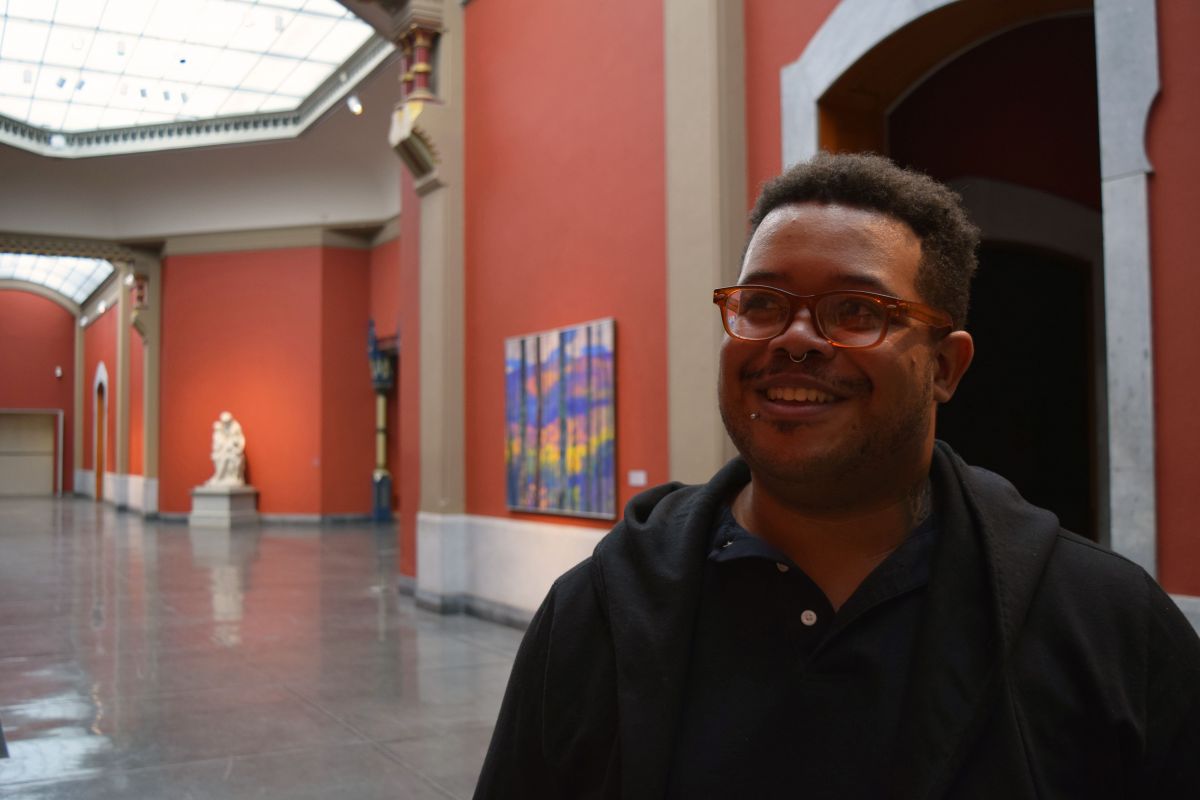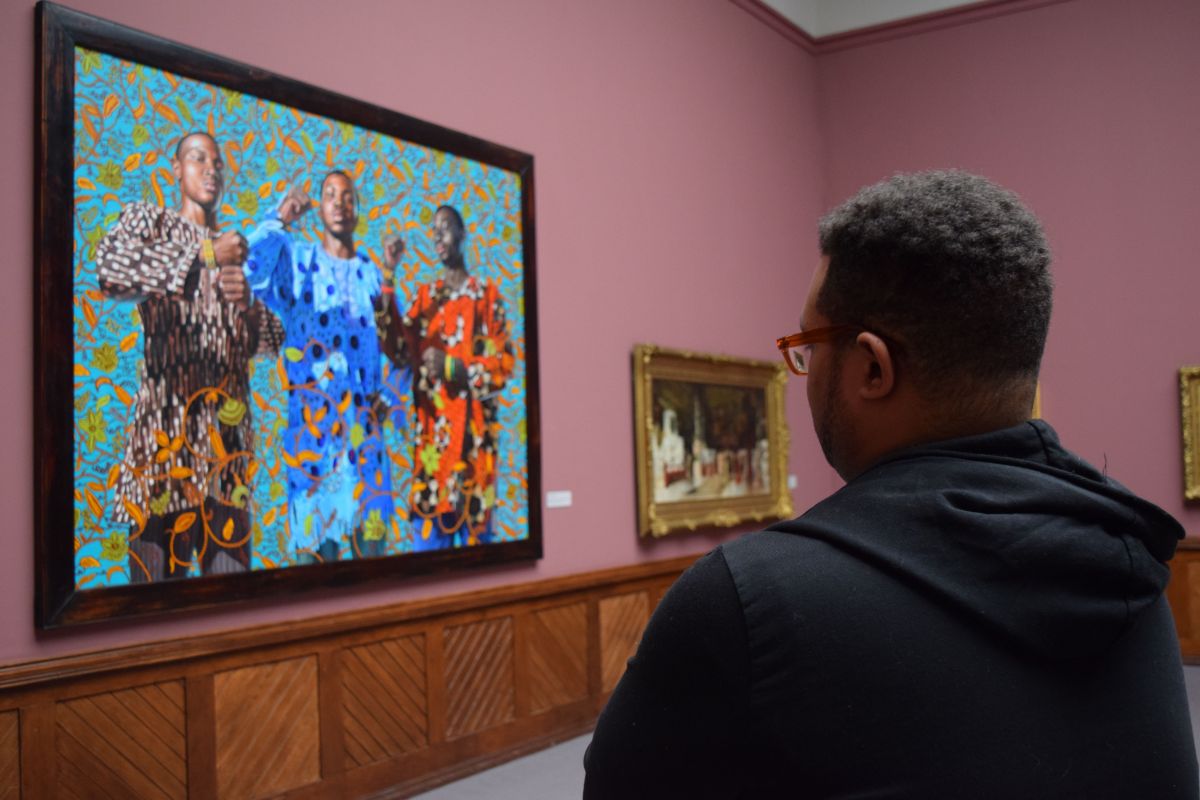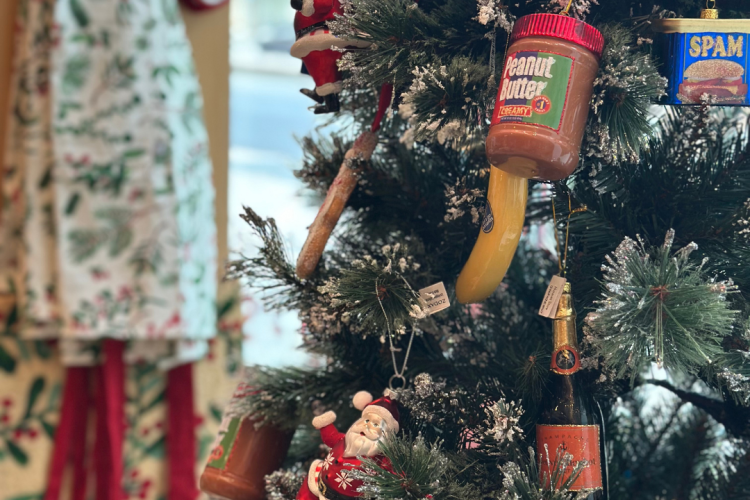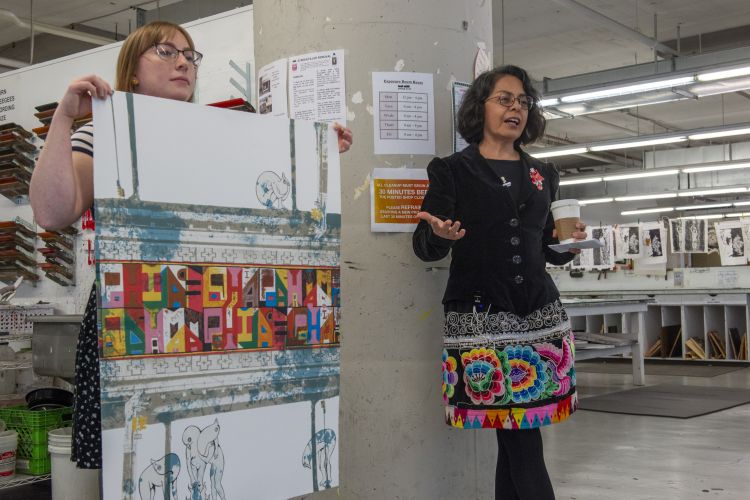STORIES FROM PAFA
Jonathan Chase
When you look at his art, Jonathan Chase (MFA '16) wants you to feel empowered.
“I want people to feel self-beauty and to be able to say ‘Hey, this is a box, a construct someone is telling me and there are other possibilities of how to experience the one body you have, the one life you have’.”
He’s challenging the ideas of traditional masculinity, what it means to be a feminine body or a masculine body, and raising the idea of intersectionality.
“It’s the possibility to say ‘Fuck you’ to the box or straight line, and make your own path,” he said.
Different isn’t bad to Chase, it’s how he’s seen himself for much of his life.
While attending Delaware Valley Charter High School, Chase was looking for more art education than the school offered.
“I think in high school people see art as something they have to take, and I was itching it for it,” he said.
An art teacher encouraged him to explore PAFA’s After-School Studio Arts Program for High School Students. He took life drawing and oil-painting classes with Al Gury.
“My first relationship to the school was the Historic Landmark Building,” Chase said. “I really liked the sort of traditional values that PAFA held, along with really rich contemporary ideas.”
After high school, the history of the Academy and its Philadelphia address captured Chase’s interest again when he began applying to graduate programs. He began his MFA in 2014.
“When I got to PAFA it was kind of nerve-wracking in one way because it’s PAFA, this amazing school with this huge history,” Chase said.
He says much of the work he made in that first semester in the MFA program fell apart, and wasn’t able to stand the test of time but his professors encouraged him to take chances, make different work.
“One of my favorite things about the program in my time here was that I was able to sort of make the mistakes that maybe I wouldn’t have been able to do as freely if I were at another program,” he said. “And the faculty and my peers were open to sharing ideas and having a dialogue. I thought that was really terrific.”
Despite the open and inclusive environment, Chase still saw himself as different.
“I’m at this school with this huge rich history of diversity and for the most part it was really interesting being a black body, and the majority of the time in my classes, the only queer body in my classes,” he said. “It was something that was sort of scary but also really exciting.”
Chase said he found support in Abigail Deville. The New York-based artist was a visiting critic during the 2014-2015 school year.
“She was the first black critic that I had. She’s fantastic and PAFA was able to give me that,” he said. “Up until that I had never encountered someone who was that close to my identity.”
Chase hopes to do for current students what Deville did for him. He now teaches portrait drawing to undergraduates.
“One of my students came to me and said he doesn’t really relate to things here,” Chase said. “So I showed him the works by Horace Pippin, Jacob Lawrence, and Kehinde Wiley and I said, ‘the ground we’re standing on is charged with so much history and bodies going through it,’ and I said, ‘Look what is happening here, now we have black artists’.”
Chase describes his time at the front of the classroom as scary and exciting, for both him and his students.
“I went in being really nervous because it means so much to me,” he said. “I’m learning a lot from them, and they’re learning to think in different modes that they’re not familiar with. It’s scary and exciting for them to take that risk.”
Jonathan Chase's solo exhibtion Quiet Storm is on exhibition at Company Gallery in New York City through May 6, 2018
We're so excited you're planning to visit PAFA!
Make time for art — visit us Thursday to Sunday.
Before reserving your tickets, please review helpful information about museum hours, accessibility, building access, and special admission programs.
If you have any questions, feel free to reach out to us at visitorservices@pafa.org — we’d love to help!





